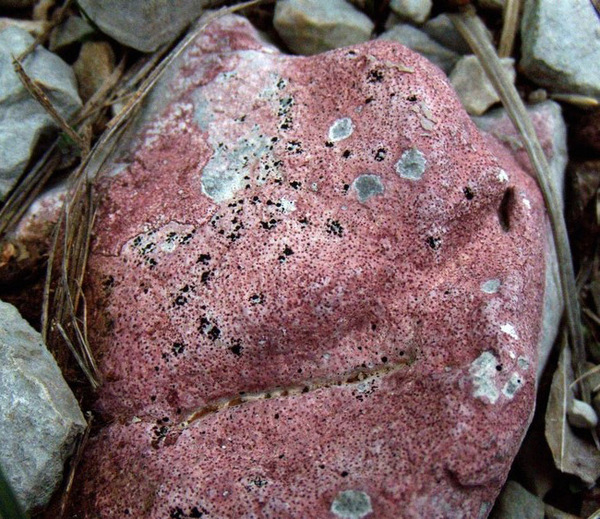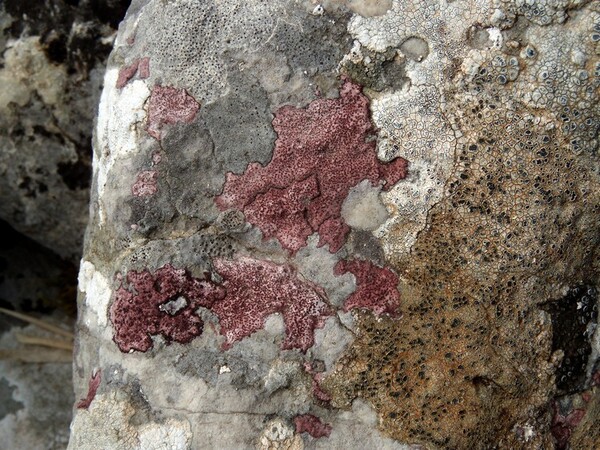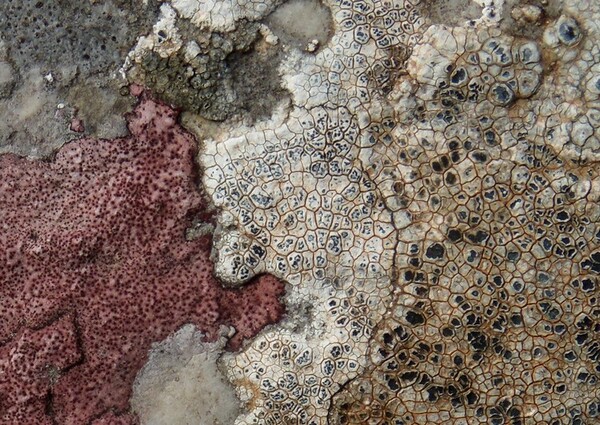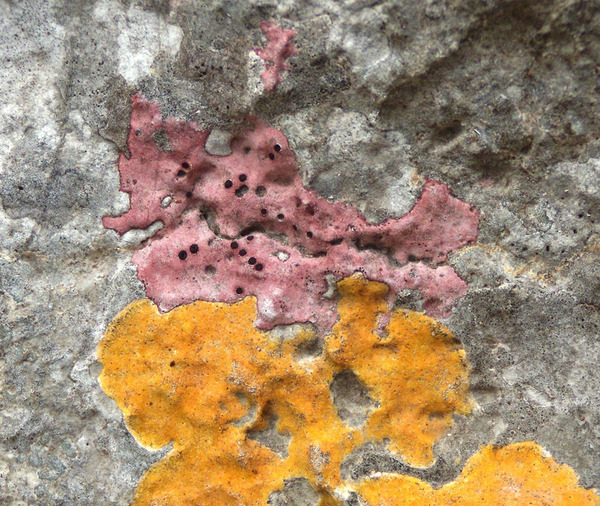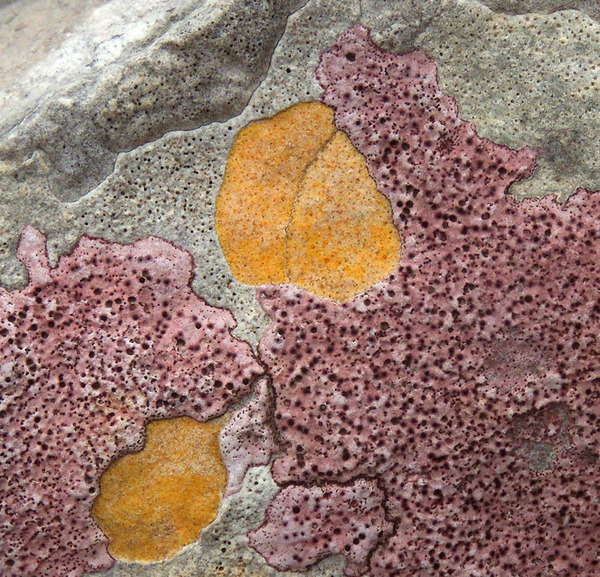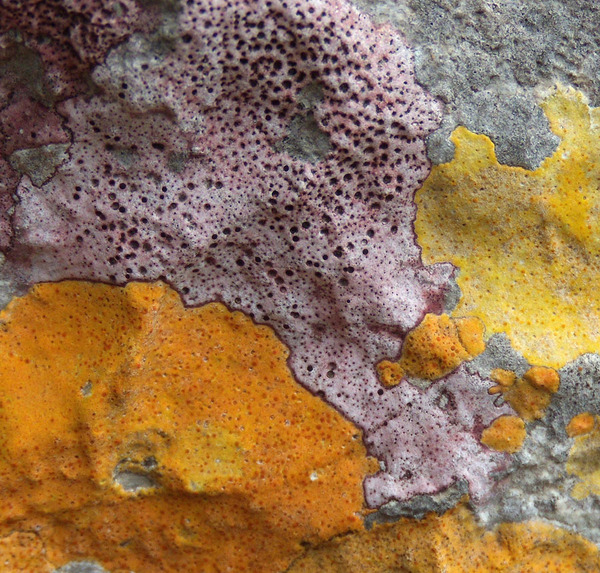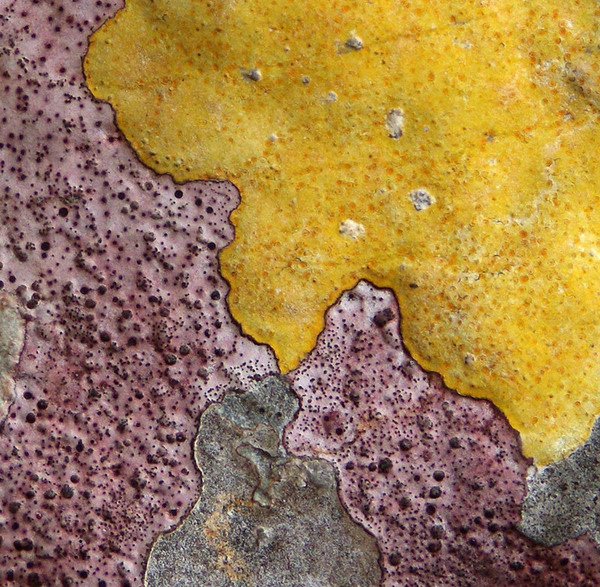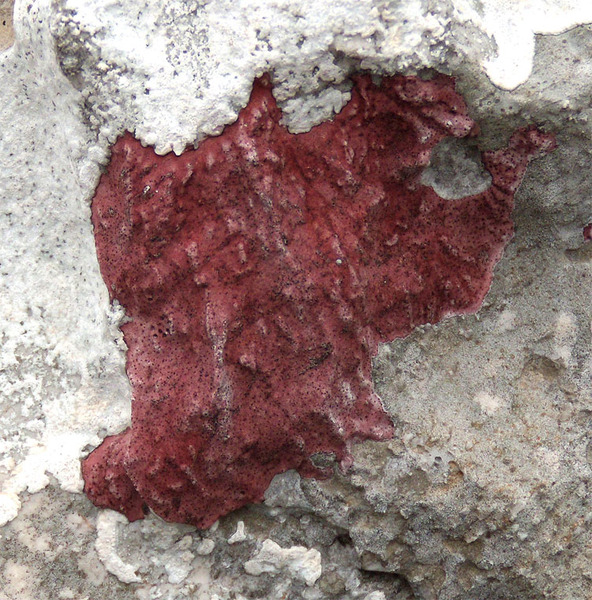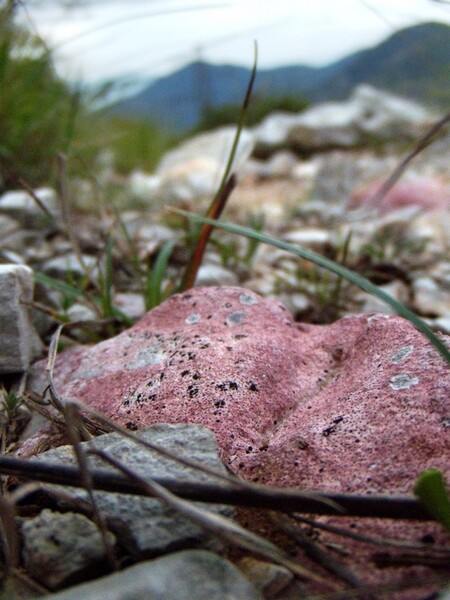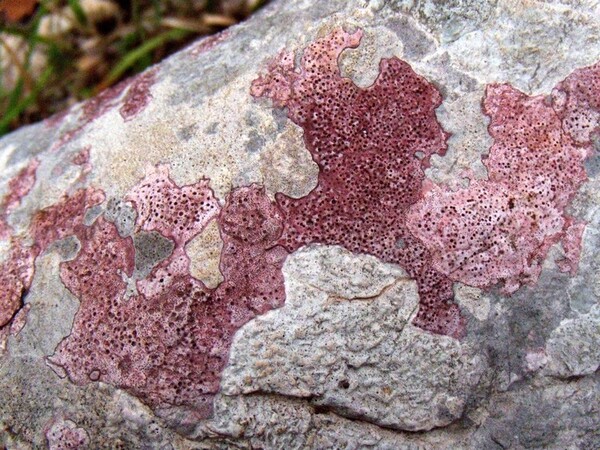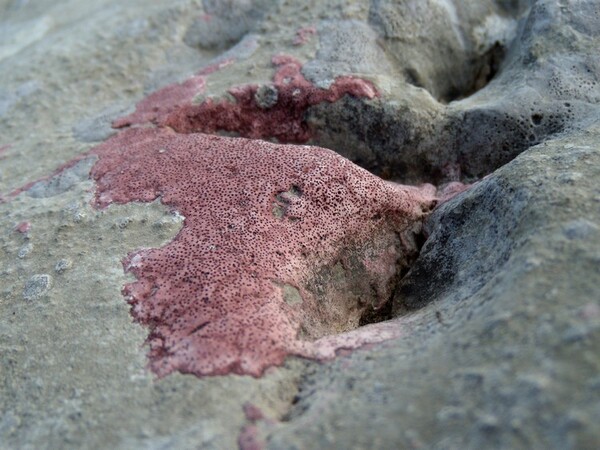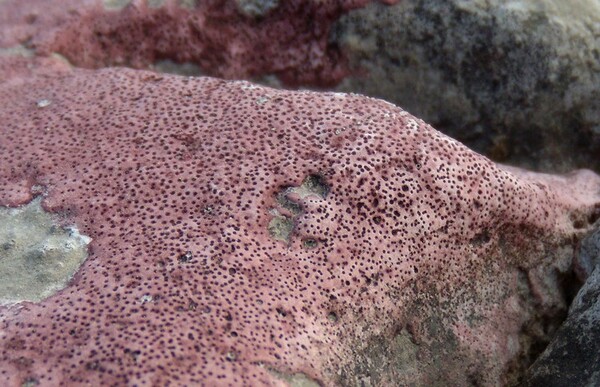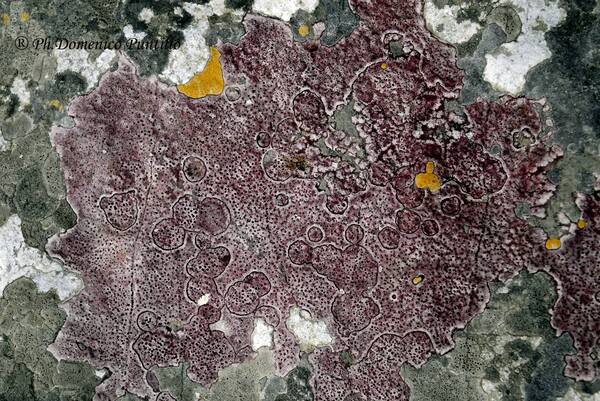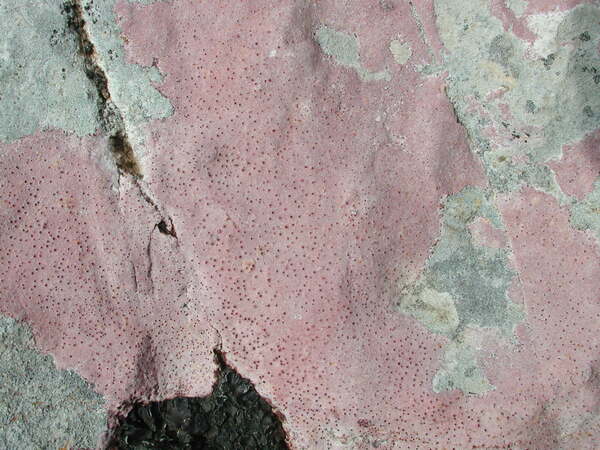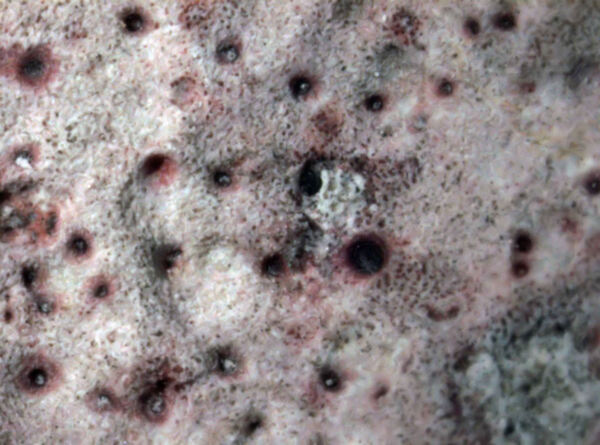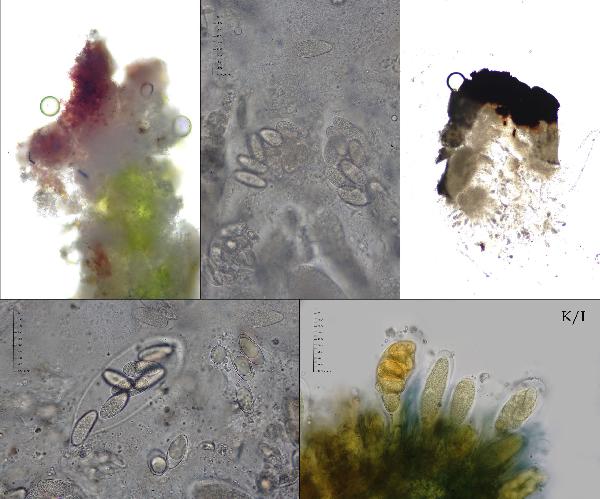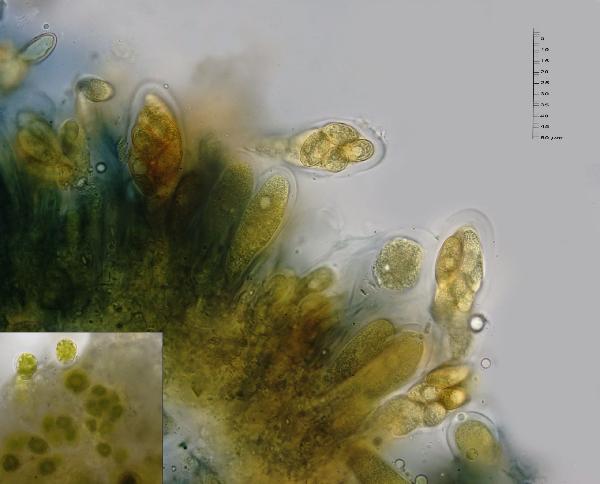Bagliettoa marmorea (Scop.) Gueidan & Cl. Roux
in Gueidan & al., Mycol. Res., 111: 1157, 2007. Basionym: Lichen marmoreus Scop. - Fl. Carniol., 2: 367, 1772.
Synonyms: Amphoridium marmoreum (Scop.) Baroni; Amphoridium marmoreum var. roseum (A. Massal.) Syd.; Amphoridium purpurascens (Hoffm.) A. Massal.; Urceolaria wulfenii Ach.; Verrucaria calciseda var. decipiens Trevis.; Verrucaria marmorea (Scop.) Arnold; Verrucaria purpurascens Hoffm.; Verrucaria purpurascens var. rosea A. Massal.
Distribution: N - VG (Nimis & Tretiach 1995, Tretiach & Pecchiari 1995, Geletti 1997, Pinna & al. 1998, Castello 2002, Martellos & Castello 2004, Crisafulli & al. 2006, Nimis & al. 2006, Piervittori & al. 2006, Bertuzzi & al. 2007, Tretiach & al. 2008b, 2010, 2012, Favero-Longo & al. 2009, 2011, Cucchi & al. 2009), Frl (Cucchi & al. 2009), Ven (Caniglia & al. 1999, Lazzarin 2000b, Nascimbene & Caniglia 2003c, Nascimbene 2005c, 2008, Nascimbene & Marini 2007), TAA (De Benetti & Caniglia 1993), Lomb, Piem (Ravera & al. 2021b), Emil (Fariselli & al. 2020), Lig. C - Tosc (Benesperi 2000a, 2006), Marc (Nimis & Tretiach 1999), Umb (Ravera & al. 2006, Panfili 2007), Laz (Roccardi & Ricci 2006), Abr (Nimis & Tretiach 1999, Cucchi & al. 2009, Caporale & al. 2016, Gheza & al. 2021), Mol (Garofalo & al. 1999, Nimis & Tretiach, 1999, 2004, Caporale & al. 2008, Ravera & Genovesi 2010, Ravera & al. 2009, Genovesi & Ravera 2014), Sar (Neuwirth 2018). S - Camp (Garofalo & al. 1999, 2010, Aprile & al. 2003, 2003b, Nimis & Tretiach 2004, Watson 2014), Pugl (Garofalo & al. 1999, Gianfreda & Matino 2020), Bas, Cal (Puntillo 1996), Si (Ottonello & Salone 1994, Ottonello & al. 1994, Ottonello 1996, Grillo 1998, Grillo & Caniglia 2004, Di Martino & Stancanelli 2015).
Description: Thallus crustose, fully endosubstratic, usually covering large surfaces, pink-violet, rarely discoloured and the pink colouration restricted to a ring around the perithecia. Cortex (lithocortex) densely prosoplectenchymatous, of conglutinated hyphae intermingled with microcrystals; algal layer discontinuous, the algal cells in clusters; medulla prosoplectenchymatous, often with oil cells (macrosphaeroids) in lower part. Perithecia black, completely immersed in thallus and leaving deep pits in the rock when they fall off, the apex flattened. Involucrellum absent; exciple dark purple (black under the stereomicroscope) in upper part, colourless in lower part, 0.2-0.3 mm wide; hymenial gel hemiamyloid, I+ red (I+ blue at very low concentrations of I), K/I+ blue; hamathecium of periphyses in the ostiolar canal, and short periphysoids in the upper half of the perithecial cavity; paraphyses dissolving early. Asci 8-spored, two-layered, fissitunicate, with a thin tholus reacting I-, Verrucaria-type. Ascospores 1-celled, hyaline, ellipsoid, often poorly developed, 13-30 x 9-15 µm. Pycnidia rare, c. 0.1 mm diam., immersed, globose, with a purple brown external wall and a colourless internal wall. Conidia simple, bacilliform, c. 3 x 1 µm. Photobiont chlorococcoid. Spot tests: thallus K+ dark blue-green, C-, KC-, P-. Chemistry: a pink pigment in thallus.
Note: on hard, compact limestone rocks in natural habitats, often also on blocks and stones near the ground, with optimum in the submediterranean belt, but reaching higher altitudes in Southern Italy.
Growth form: Crustose endolithic
Substrata: rocks
Photobiont: green algae other than Trentepohlia
Reproductive strategy: mainly sexual
Commonnes-rarity: (info)
Alpine belt: absent
Subalpine belt: extremely rare
Oromediterranean belt: very rare
Montane belt: rather rare
Submediterranean belt: common
Padanian area: extremely rare
Humid submediterranean belt: very common
Humid mediterranean belt: rather common
Dry mediterranean belt: rather rare
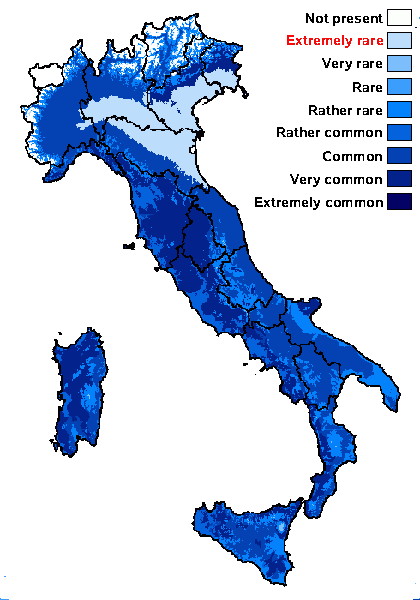
Predictive model
Herbarium samples
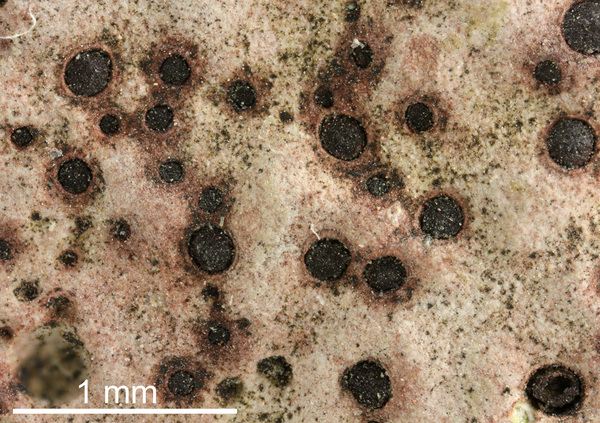
Felix Schumm - CC BY-SA 4.0
[2501], Westgriechenland, Epirus: häufig an lichtoffenen Stirn- und Neigungsflächen glatter Kalkblöcke, 1200 m, SW-SO, pH 7,9, Steinfluren des Pindosgebirges oberhalb des Nordufers des Janinasees. Leg. et det. G. Follmann 04.1973. Lich. Exs. Sel. A Mus.Hist. Nat. Casselensi Ed. 82.


Andrea Moro; Owner: Department of Life Sciences, University of Trieste
Italy, Friuli Venezia Giulia, Trieste, Trieste Karst. Loc. Slivia,near the Castelliere
11.2016


Andrea Moro; Owner: Department of Life Sciences, University of Trieste
Italy, Friuli Venezia Giulia, Trieste, Trieste Karst. Loc. Slivia,near the Castelliere
11.2016
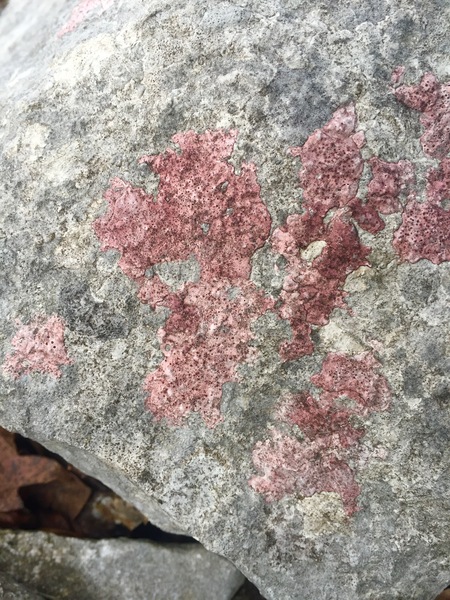

Pier Luigi Nimis; Owner: Department of Life Sciences, University of Trieste
Italy, Friuli Venezia Giulia, Trieste, Trieste Karst near Slivia
12/2016
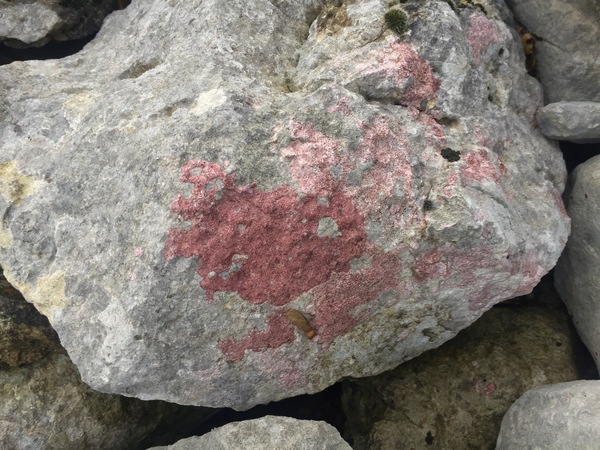

Pier Luigi Nimis; Owner: Department of Life Sciences, University of Trieste
Italy, Friuli Venezia Giulia, Trieste, Trieste Karst near Slivia
12/2016
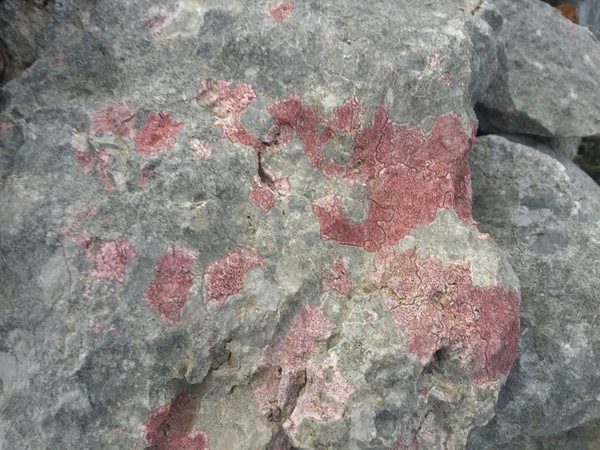

Pier Luigi Nimis; Owner: Department of Life Sciences, University of Trieste
Italy, Friuli Venezia Giulia, Trieste, Trieste Karst near Slivia
12/2016
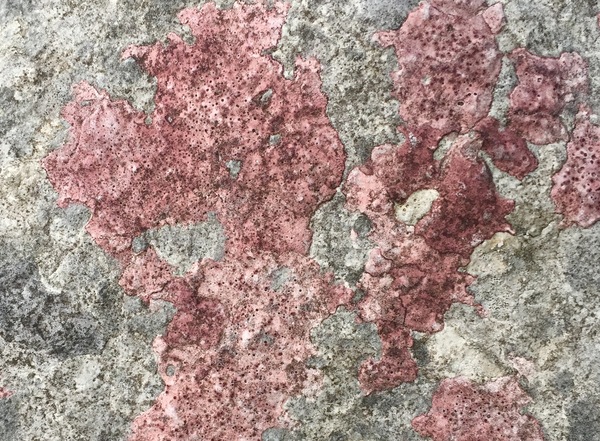

Pier Luigi Nimis; Owner: Department of Life Sciences, University of Trieste
Italy, Friuli Venezia Giulia, Trieste, Trieste Karst near Slivia
12/2016
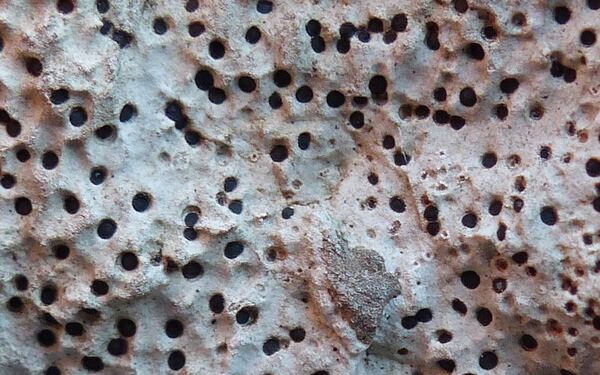

Andrea Moro; Owner: Department of Life Sciences, University of Trieste
italy, Friuli Venezia Giulia, Trieste, Trieste Karst near Borgo Grotta Gigante
16/02/2017


Andrea Moro; Owner: Department of Life Sciences, University of Trieste
italy, Friuli Venezia Giulia, Trieste, Trieste Karst near Borgo Grotta Gigante
16/02/2017
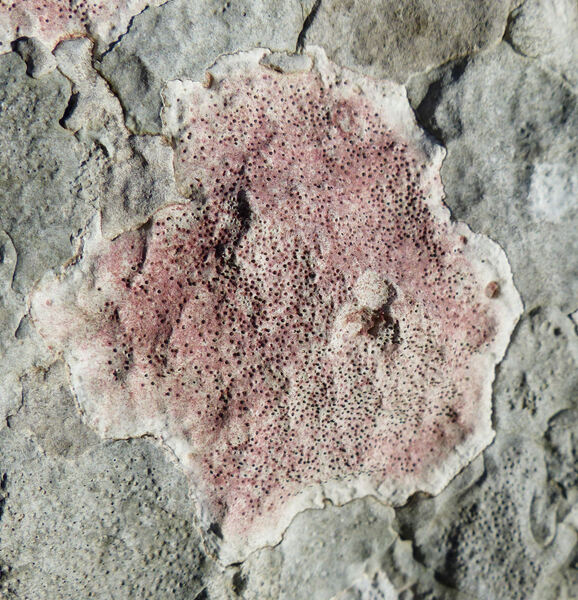

Andrea Moro; Owner: Department of Life Sciences, University of Trieste
italy, Friuli Venezia Giulia, Trieste, Trieste Karst near Borgo Grotta Gigante
16/02/2017
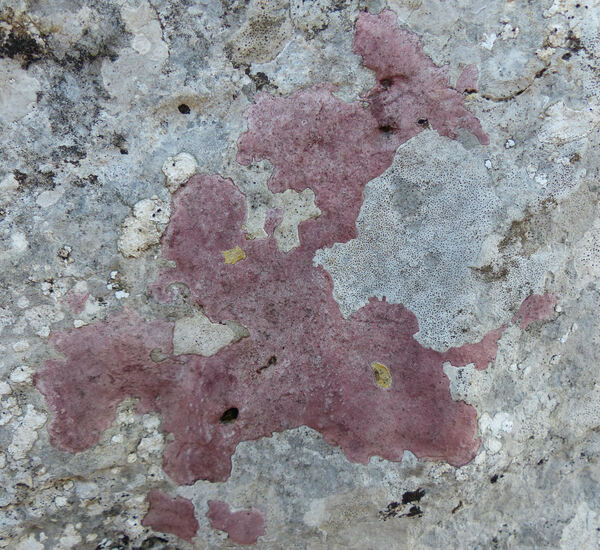

Andrea Moro; Owner: Department of Life Sciences, University of Trieste
italy, Friuli Venezia Giulia, Trieste, Trieste Karst near Borgo Grotta Gigante
16/02/2017

Felix Schumm - CC BY-SA 4.0
[2501], Westgriechenland, Epirus: häufig an lichtoffenen Stirn- und Neigungsflächen glatter Kalkblöcke, 1200 m, SW-SO, pH 7,9, Steinfluren des Pindosgebirges oberhalb des Nordufers des Janinasees. Leg. et det. G. Follmann 04.1973. Lich. Exs. Sel. A Mus.Hist. Nat. Casselensi Ed. 82.
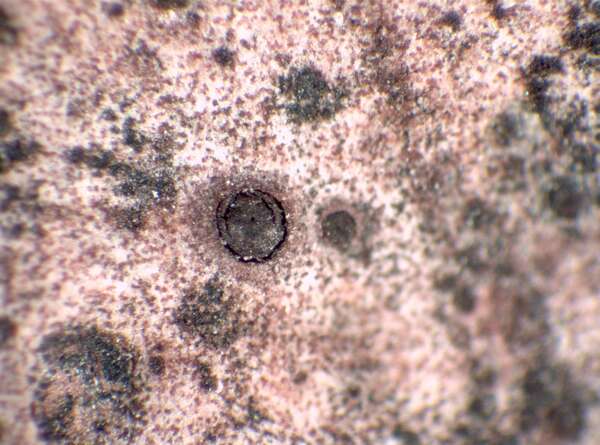

P.L. Nimis; Owner: Department of Life Sciences, University of Trieste
Herbarium: TSB (1500)
2001/12/03

Felix Schumm - CC BY-SA 4.0
[2501], Westgriechenland, Epirus: häufig an lichtoffenen Stirn- und Neigungsflächen glatter Kalkblöcke, 1200 m, SW-SO, pH 7,9, Steinfluren des Pindosgebirges oberhalb des Nordufers des Janinasees. Leg. et det. G. Follmann 04.1973. Lich. Exs. Sel. A Mus.Hist. Nat. Casselensi Ed. 82.
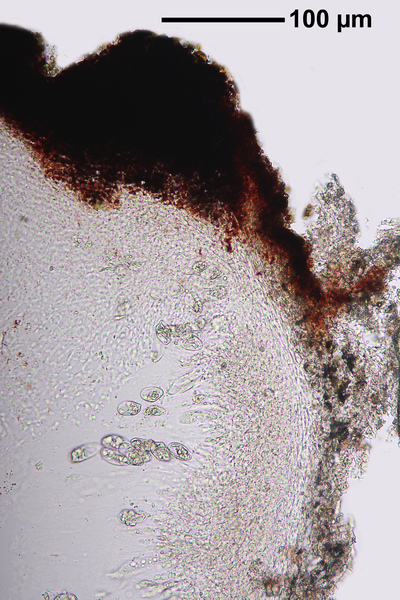
Felix Schumm - CC BY-SA 4.0
[2501], Westgriechenland, Epirus: häufig an lichtoffenen Stirn- und Neigungsflächen glatter Kalkblöcke, 1200 m, SW-SO, pH 7,9, Steinfluren des Pindosgebirges oberhalb des Nordufers des Janinasees. Leg. et det. G. Follmann 04.1973. Lich. Exs. Sel. A Mus.Hist. Nat. Casselensi Ed. 82.
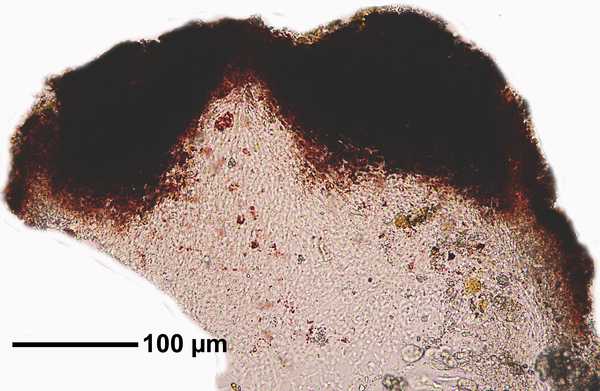
Felix Schumm - CC BY-SA 4.0
[2501], Westgriechenland, Epirus: häufig an lichtoffenen Stirn- und Neigungsflächen glatter Kalkblöcke, 1200 m, SW-SO, pH 7,9, Steinfluren des Pindosgebirges oberhalb des Nordufers des Janinasees. Leg. et det. G. Follmann 04.1973. Lich. Exs. Sel. A Mus.Hist. Nat. Casselensi Ed. 82.
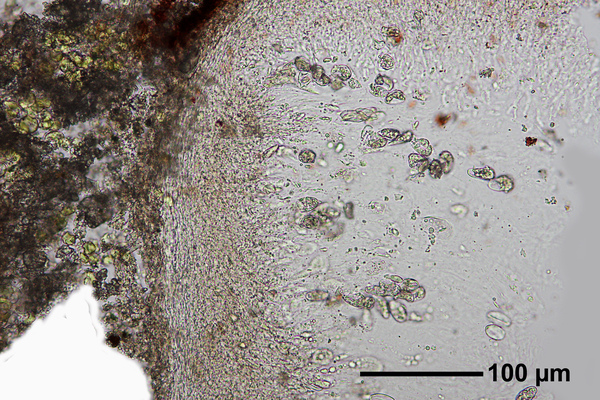
Felix Schumm - CC BY-SA 4.0
[2501], Westgriechenland, Epirus: häufig an lichtoffenen Stirn- und Neigungsflächen glatter Kalkblöcke, 1200 m, SW-SO, pH 7,9, Steinfluren des Pindosgebirges oberhalb des Nordufers des Janinasees. Leg. et det. G. Follmann 04.1973. Lich. Exs. Sel. A Mus.Hist. Nat. Casselensi Ed. 82.
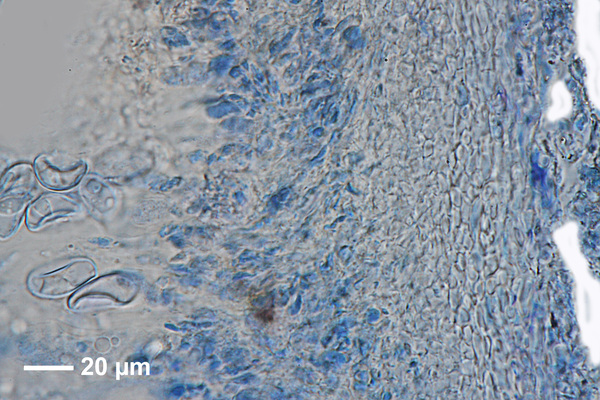
Felix Schumm - CC BY-SA 4.0
[2501], Westgriechenland, Epirus: häufig an lichtoffenen Stirn- und Neigungsflächen glatter Kalkblöcke, 1200 m, SW-SO, pH 7,9, Steinfluren des Pindosgebirges oberhalb des Nordufers des Janinasees. Leg. et det. G. Follmann 04.1973. Lich. Exs. Sel. A Mus.Hist. Nat. Casselensi Ed. 82.
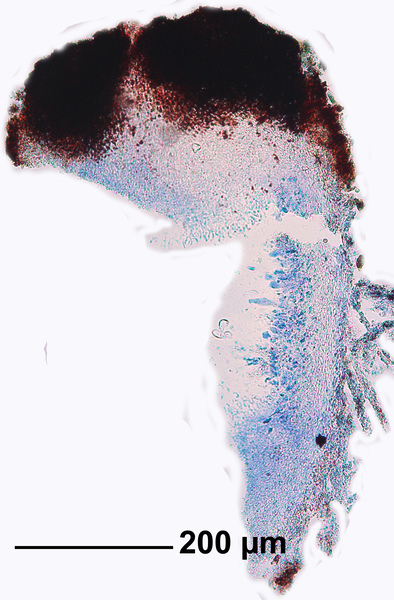
Felix Schumm - CC BY-SA 4.0
[2501], Westgriechenland, Epirus: häufig an lichtoffenen Stirn- und Neigungsflächen glatter Kalkblöcke, 1200 m, SW-SO, pH 7,9, Steinfluren des Pindosgebirges oberhalb des Nordufers des Janinasees. Leg. et det. G. Follmann 04.1973. Lich. Exs. Sel. A Mus.Hist. Nat. Casselensi Ed. 82.
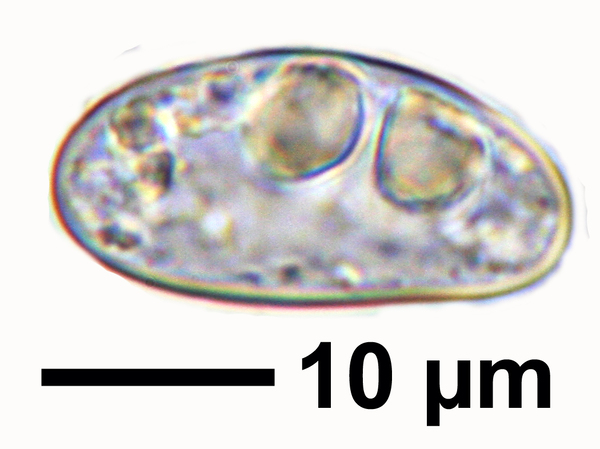
Felix Schumm - CC BY-SA 4.0
[2501], Westgriechenland, Epirus: häufig an lichtoffenen Stirn- und Neigungsflächen glatter Kalkblöcke, 1200 m, SW-SO, pH 7,9, Steinfluren des Pindosgebirges oberhalb des Nordufers des Janinasees. Leg. et det. G. Follmann 04.1973. Lich. Exs. Sel. A Mus.Hist. Nat. Casselensi Ed. 82.
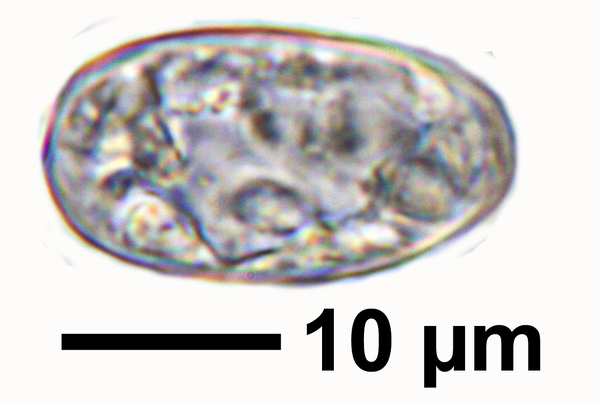
Felix Schumm - CC BY-SA 4.0
[2501], Westgriechenland, Epirus: häufig an lichtoffenen Stirn- und Neigungsflächen glatter Kalkblöcke, 1200 m, SW-SO, pH 7,9, Steinfluren des Pindosgebirges oberhalb des Nordufers des Janinasees. Leg. et det. G. Follmann 04.1973. Lich. Exs. Sel. A Mus.Hist. Nat. Casselensi Ed. 82.
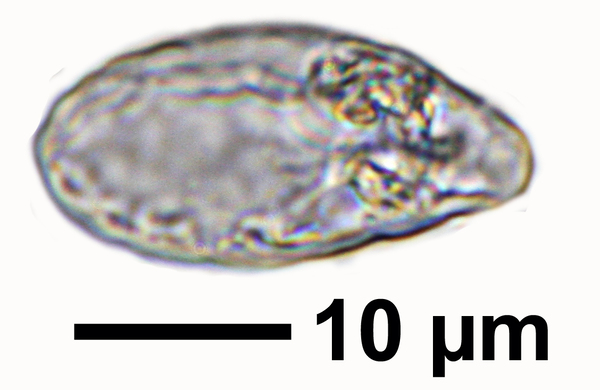
Felix Schumm - CC BY-SA 4.0
[2501], Westgriechenland, Epirus: häufig an lichtoffenen Stirn- und Neigungsflächen glatter Kalkblöcke, 1200 m, SW-SO, pH 7,9, Steinfluren des Pindosgebirges oberhalb des Nordufers des Janinasees. Leg. et det. G. Follmann 04.1973. Lich. Exs. Sel. A Mus.Hist. Nat. Casselensi Ed. 82.
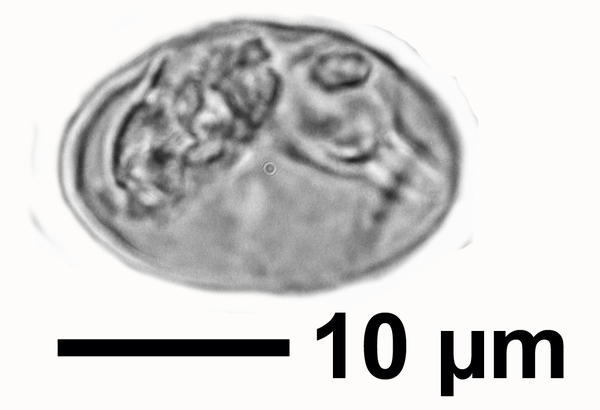
Felix Schumm - CC BY-SA 4.0
[2501], Westgriechenland, Epirus: häufig an lichtoffenen Stirn- und Neigungsflächen glatter Kalkblöcke, 1200 m, SW-SO, pH 7,9, Steinfluren des Pindosgebirges oberhalb des Nordufers des Janinasees. Leg. et det. G. Follmann 04.1973. Lich. Exs. Sel. A Mus.Hist. Nat. Casselensi Ed. 82.
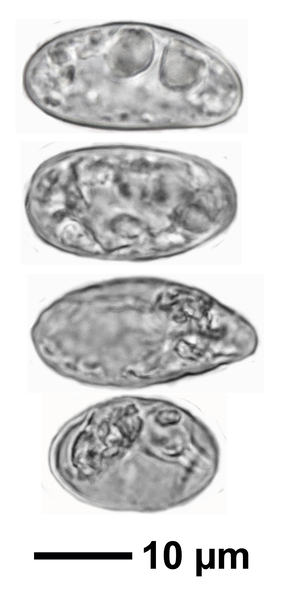
Felix Schumm - CC BY-SA 4.0
[2501], Westgriechenland, Epirus: häufig an lichtoffenen Stirn- und Neigungsflächen glatter Kalkblöcke, 1200 m, SW-SO, pH 7,9, Steinfluren des Pindosgebirges oberhalb des Nordufers des Janinasees. Leg. et det. G. Follmann 04.1973. Lich. Exs. Sel. A Mus.Hist. Nat. Casselensi Ed. 82.
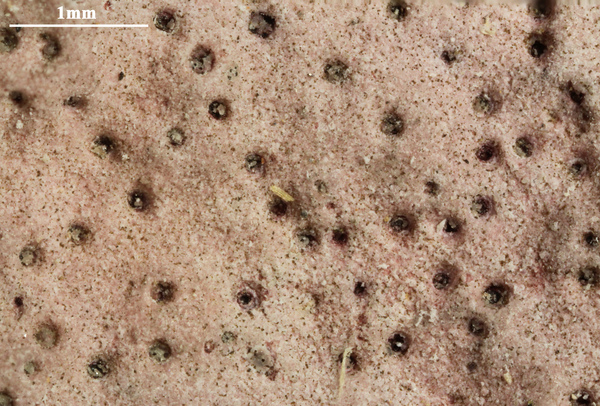

Felix Schumm - CC BY.SA 4.0
[899], Jugoslavien, Sibenik, auf sonnigen Kalkfelsen bei Jadrija. Leg. F. Schumm 24.08.1970, det. F. Schumm 1970
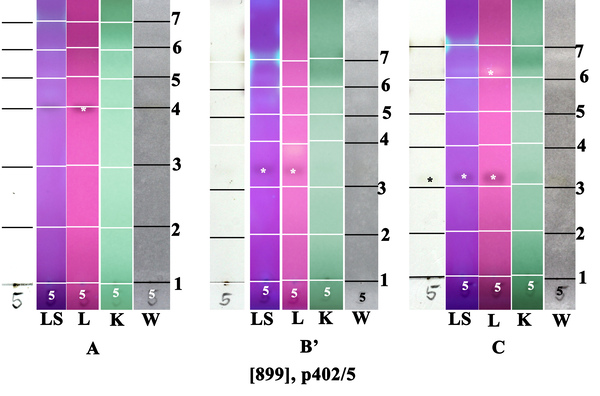

Felix Schumm - CC BY.SA 4.0
[899], Jugoslavien, Sibenik, auf sonnigen Kalkfelsen bei Jadrija. Leg. F. Schumm 24.08.1970, det. F. Schumm 1970
Das rote Pigment des Thallus ist in Aceton praktisch unlöslich und ergibt daher im HPTLC keine Flecke


Felix Schumm - CC BY.SA 4.0
[16418], Mallorca (Nord), Biniaraix östl. von Soller, Weg zum Cami des Barranc; 39,77202° N, 2,73610° E, 100-300 m. Leg. F. Schumm, J.P. Frahm & M. Lüth, 14.03.2010, det. F. Schumm, 2011
Das rote Pigment des Thallus ist in Aceton praktisch unlöslich und ergibt daher im HPTLC keine Flecke
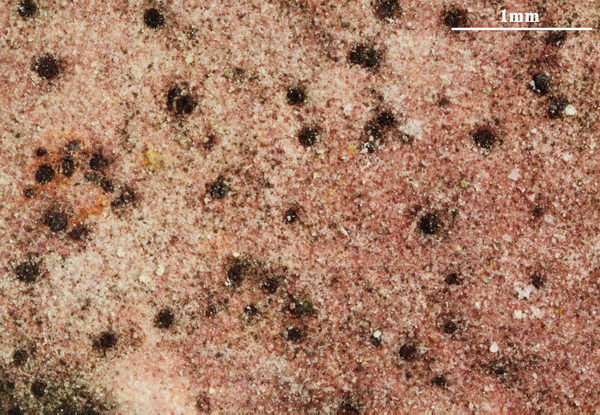

Felix Schumm - CC BY.SA 4.0
[16418], Mallorca (Nord), Biniaraix östl. von Soller, Weg zum Cami des Barranc; 39,77202° N, 2,73610° E, 100-300 m. Leg. F. Schumm, J.P. Frahm & M. Lüth, 14.03.2010, det. F. Schumm, 2011
Das rote Pigment des Thallus ist in Aceton praktisch unlöslich und ergibt daher im HPTLC keine Flecke


Felix Schumm - CC BY.SA 4.0
[16418], Mallorca (Nord), Biniaraix östl. von Soller, Weg zum Cami des Barranc; 39,77202° N, 2,73610° E, 100-300 m. Leg. F. Schumm, J.P. Frahm & M. Lüth, 14.03.2010, det. F. Schumm, 2011
Das rote Pigment des Thallus ist in Aceton praktisch unlöslich und ergibt daher im HPTLC keine Flecke
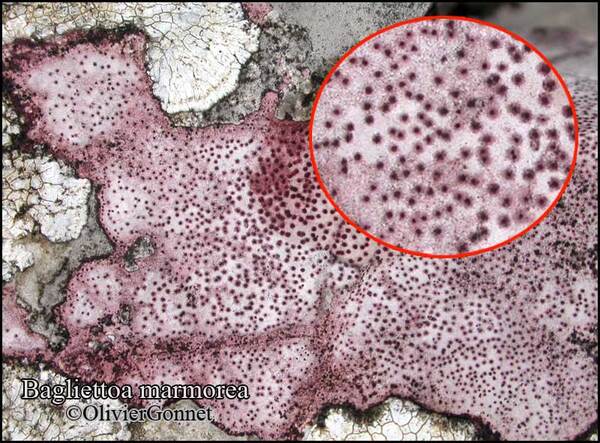
Courtesy Danièle et Olivier Gonnet - Source: https://www.afl-lichenologie.fr/Photos_AFL/Photos_AFL_B/Bagliettoa_marmorea.htm
France, session AFL 2005 en Lozère

Courtesy Danièle et Olivier Gonnet - Source: https://www.afl-lichenologie.fr/Photos_AFL/Photos_AFL_B/Bagliettoa_marmorea.htm
France, session AFL 2005 en Lozère
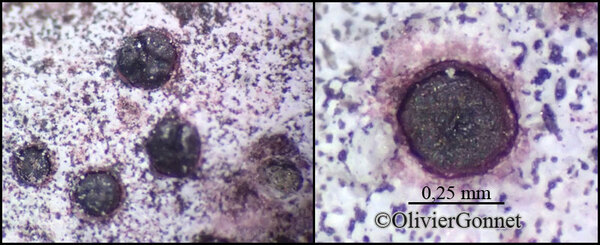
Courtesy Danièle et Olivier Gonnet - Source: https://www.afl-lichenologie.fr/Photos_AFL/Photos_AFL_B/Bagliettoa_marmorea.htm
France, session AFL 2005 en Lozère
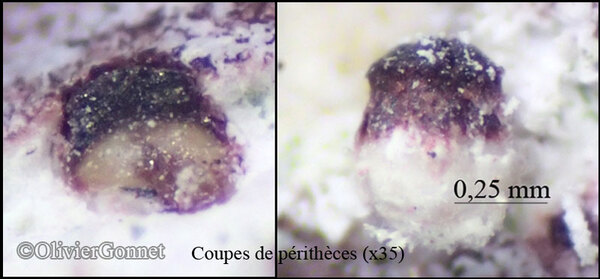
Courtesy Danièle et Olivier Gonnet - Source: https://www.afl-lichenologie.fr/Photos_AFL/Photos_AFL_B/Bagliettoa_marmorea.htm
France, session AFL 2005 en Lozère
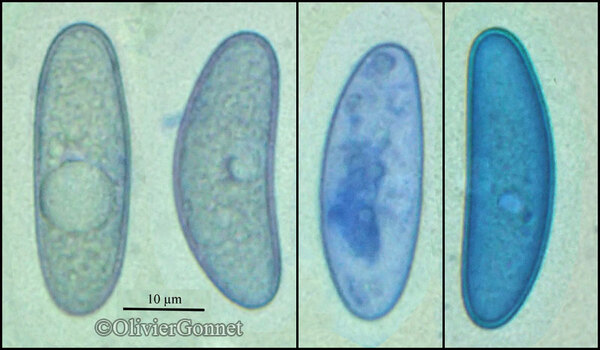
Courtesy Danièle et Olivier Gonnet - Source: https://www.afl-lichenologie.fr/Photos_AFL/Photos_AFL_B/Bagliettoa_marmorea.htm
France, session AFL 2005 en Lozère
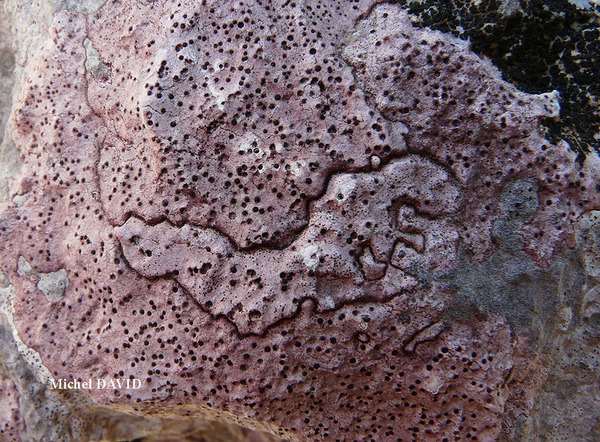
Michel David - Source: http://www.lichensmaritimes.org/index.php?task=fiche&lichen=886&lang=en
Corfou

Michel David - Source: http://www.lichensmaritimes.org/index.php?task=fiche&lichen=886&lang=en
Corfou

Bernard Bouffinier - Source: http://www.lichensmaritimes.org/index.php?task=fiche&lichen=886&lang=en
France, Esparron du Verdon

Bernard Bouffinier - Source: http://www.lichensmaritimes.org/index.php?task=fiche&lichen=886&lang=en
France, Esparron du Verdon
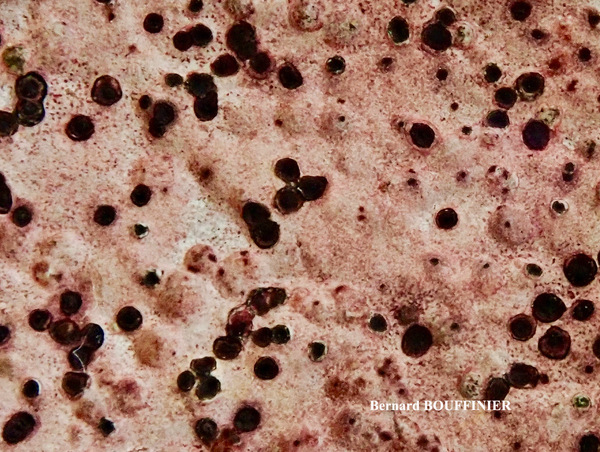
Bernard Bouffinier - Source: http://www.lichensmaritimes.org/index.php?task=fiche&lichen=886&lang=en
France, Esparron du Verdon

Marta González Garcia - Centro de Estudios Micologicos Asturianos
Capilla del Alba (Quirós-Asturias), 5-X-2022, en rocas calcáreas, leg. & det. M. González, ERD-9582.
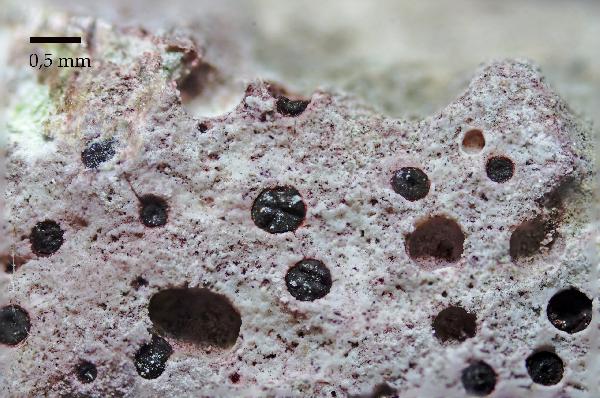
Marta González Garcia - Centro de Estudios Micologicos Asturianos
Capilla del Alba (Quirós-Asturias), 5-X-2022, en rocas calcáreas, leg. & det. M. González, ERD-9582.
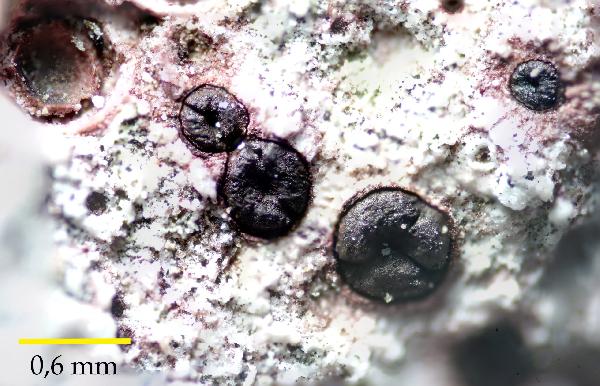
Marta González Garcia - Centro de Estudios Micologicos Asturianos
Capilla del Alba (Quirós-Asturias), 5-X-2022, en rocas calcáreas, leg. & det. M. González, ERD-9582.
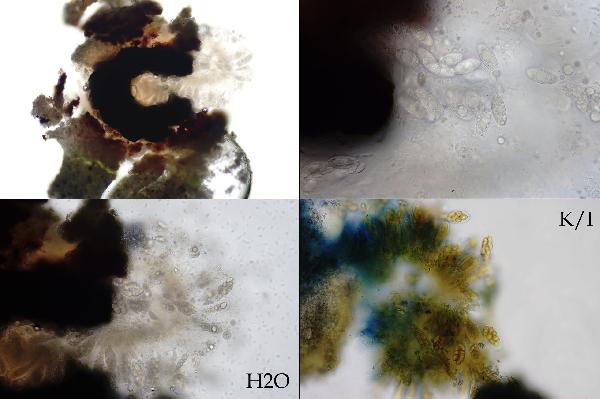
Marta González Garcia - Centro de Estudios Micologicos Asturianos
Capilla del Alba (Quirós-Asturias), 5-X-2022, en rocas calcáreas, leg. & det. M. González, ERD-9582.
Growth form: Crustose endolithic
Substrata: rocks
Photobiont: green algae other than Trentepohlia
Reproductive strategy: mainly sexual
Commonnes-rarity: (info)
Alpine belt: absent
Subalpine belt: extremely rare
Oromediterranean belt: very rare
Montane belt: rather rare
Submediterranean belt: common
Padanian area: extremely rare
Humid submediterranean belt: very common
Humid mediterranean belt: rather common
Dry mediterranean belt: rather rare

Predictive model
| Herbarium samples |

Felix Schumm - CC BY-SA 4.0
[2501], Westgriechenland, Epirus: häufig an lichtoffenen Stirn- und Neigungsflächen glatter Kalkblöcke, 1200 m, SW-SO, pH 7,9, Steinfluren des Pindosgebirges oberhalb des Nordufers des Janinasees. Leg. et det. G. Follmann 04.1973. Lich. Exs. Sel. A Mus.Hist. Nat. Casselensi Ed. 82.


Andrea Moro; Owner: Department of Life Sciences, University of Trieste
Italy, Friuli Venezia Giulia, Trieste, Trieste Karst. Loc. Slivia,near the Castelliere
11.2016


Andrea Moro; Owner: Department of Life Sciences, University of Trieste
Italy, Friuli Venezia Giulia, Trieste, Trieste Karst. Loc. Slivia,near the Castelliere
11.2016


Pier Luigi Nimis; Owner: Department of Life Sciences, University of Trieste
Italy, Friuli Venezia Giulia, Trieste, Trieste Karst near Slivia
12/2016


Pier Luigi Nimis; Owner: Department of Life Sciences, University of Trieste
Italy, Friuli Venezia Giulia, Trieste, Trieste Karst near Slivia
12/2016


Pier Luigi Nimis; Owner: Department of Life Sciences, University of Trieste
Italy, Friuli Venezia Giulia, Trieste, Trieste Karst near Slivia
12/2016


Pier Luigi Nimis; Owner: Department of Life Sciences, University of Trieste
Italy, Friuli Venezia Giulia, Trieste, Trieste Karst near Slivia
12/2016


Andrea Moro; Owner: Department of Life Sciences, University of Trieste
italy, Friuli Venezia Giulia, Trieste, Trieste Karst near Borgo Grotta Gigante
16/02/2017


Andrea Moro; Owner: Department of Life Sciences, University of Trieste
italy, Friuli Venezia Giulia, Trieste, Trieste Karst near Borgo Grotta Gigante
16/02/2017


Andrea Moro; Owner: Department of Life Sciences, University of Trieste
italy, Friuli Venezia Giulia, Trieste, Trieste Karst near Borgo Grotta Gigante
16/02/2017


Andrea Moro; Owner: Department of Life Sciences, University of Trieste
italy, Friuli Venezia Giulia, Trieste, Trieste Karst near Borgo Grotta Gigante
16/02/2017

Felix Schumm - CC BY-SA 4.0
[2501], Westgriechenland, Epirus: häufig an lichtoffenen Stirn- und Neigungsflächen glatter Kalkblöcke, 1200 m, SW-SO, pH 7,9, Steinfluren des Pindosgebirges oberhalb des Nordufers des Janinasees. Leg. et det. G. Follmann 04.1973. Lich. Exs. Sel. A Mus.Hist. Nat. Casselensi Ed. 82.


P.L. Nimis; Owner: Department of Life Sciences, University of Trieste
Herbarium: TSB (1500)
2001/12/03

Felix Schumm - CC BY-SA 4.0
[2501], Westgriechenland, Epirus: häufig an lichtoffenen Stirn- und Neigungsflächen glatter Kalkblöcke, 1200 m, SW-SO, pH 7,9, Steinfluren des Pindosgebirges oberhalb des Nordufers des Janinasees. Leg. et det. G. Follmann 04.1973. Lich. Exs. Sel. A Mus.Hist. Nat. Casselensi Ed. 82.

Felix Schumm - CC BY-SA 4.0
[2501], Westgriechenland, Epirus: häufig an lichtoffenen Stirn- und Neigungsflächen glatter Kalkblöcke, 1200 m, SW-SO, pH 7,9, Steinfluren des Pindosgebirges oberhalb des Nordufers des Janinasees. Leg. et det. G. Follmann 04.1973. Lich. Exs. Sel. A Mus.Hist. Nat. Casselensi Ed. 82.

Felix Schumm - CC BY-SA 4.0
[2501], Westgriechenland, Epirus: häufig an lichtoffenen Stirn- und Neigungsflächen glatter Kalkblöcke, 1200 m, SW-SO, pH 7,9, Steinfluren des Pindosgebirges oberhalb des Nordufers des Janinasees. Leg. et det. G. Follmann 04.1973. Lich. Exs. Sel. A Mus.Hist. Nat. Casselensi Ed. 82.

Felix Schumm - CC BY-SA 4.0
[2501], Westgriechenland, Epirus: häufig an lichtoffenen Stirn- und Neigungsflächen glatter Kalkblöcke, 1200 m, SW-SO, pH 7,9, Steinfluren des Pindosgebirges oberhalb des Nordufers des Janinasees. Leg. et det. G. Follmann 04.1973. Lich. Exs. Sel. A Mus.Hist. Nat. Casselensi Ed. 82.

Felix Schumm - CC BY-SA 4.0
[2501], Westgriechenland, Epirus: häufig an lichtoffenen Stirn- und Neigungsflächen glatter Kalkblöcke, 1200 m, SW-SO, pH 7,9, Steinfluren des Pindosgebirges oberhalb des Nordufers des Janinasees. Leg. et det. G. Follmann 04.1973. Lich. Exs. Sel. A Mus.Hist. Nat. Casselensi Ed. 82.

Felix Schumm - CC BY-SA 4.0
[2501], Westgriechenland, Epirus: häufig an lichtoffenen Stirn- und Neigungsflächen glatter Kalkblöcke, 1200 m, SW-SO, pH 7,9, Steinfluren des Pindosgebirges oberhalb des Nordufers des Janinasees. Leg. et det. G. Follmann 04.1973. Lich. Exs. Sel. A Mus.Hist. Nat. Casselensi Ed. 82.

Felix Schumm - CC BY-SA 4.0
[2501], Westgriechenland, Epirus: häufig an lichtoffenen Stirn- und Neigungsflächen glatter Kalkblöcke, 1200 m, SW-SO, pH 7,9, Steinfluren des Pindosgebirges oberhalb des Nordufers des Janinasees. Leg. et det. G. Follmann 04.1973. Lich. Exs. Sel. A Mus.Hist. Nat. Casselensi Ed. 82.

Felix Schumm - CC BY-SA 4.0
[2501], Westgriechenland, Epirus: häufig an lichtoffenen Stirn- und Neigungsflächen glatter Kalkblöcke, 1200 m, SW-SO, pH 7,9, Steinfluren des Pindosgebirges oberhalb des Nordufers des Janinasees. Leg. et det. G. Follmann 04.1973. Lich. Exs. Sel. A Mus.Hist. Nat. Casselensi Ed. 82.

Felix Schumm - CC BY-SA 4.0
[2501], Westgriechenland, Epirus: häufig an lichtoffenen Stirn- und Neigungsflächen glatter Kalkblöcke, 1200 m, SW-SO, pH 7,9, Steinfluren des Pindosgebirges oberhalb des Nordufers des Janinasees. Leg. et det. G. Follmann 04.1973. Lich. Exs. Sel. A Mus.Hist. Nat. Casselensi Ed. 82.

Felix Schumm - CC BY-SA 4.0
[2501], Westgriechenland, Epirus: häufig an lichtoffenen Stirn- und Neigungsflächen glatter Kalkblöcke, 1200 m, SW-SO, pH 7,9, Steinfluren des Pindosgebirges oberhalb des Nordufers des Janinasees. Leg. et det. G. Follmann 04.1973. Lich. Exs. Sel. A Mus.Hist. Nat. Casselensi Ed. 82.

Felix Schumm - CC BY-SA 4.0
[2501], Westgriechenland, Epirus: häufig an lichtoffenen Stirn- und Neigungsflächen glatter Kalkblöcke, 1200 m, SW-SO, pH 7,9, Steinfluren des Pindosgebirges oberhalb des Nordufers des Janinasees. Leg. et det. G. Follmann 04.1973. Lich. Exs. Sel. A Mus.Hist. Nat. Casselensi Ed. 82.


Felix Schumm - CC BY.SA 4.0
[899], Jugoslavien, Sibenik, auf sonnigen Kalkfelsen bei Jadrija. Leg. F. Schumm 24.08.1970, det. F. Schumm 1970


Felix Schumm - CC BY.SA 4.0
[899], Jugoslavien, Sibenik, auf sonnigen Kalkfelsen bei Jadrija. Leg. F. Schumm 24.08.1970, det. F. Schumm 1970
Das rote Pigment des Thallus ist in Aceton praktisch unlöslich und ergibt daher im HPTLC keine Flecke


Felix Schumm - CC BY.SA 4.0
[16418], Mallorca (Nord), Biniaraix östl. von Soller, Weg zum Cami des Barranc; 39,77202° N, 2,73610° E, 100-300 m. Leg. F. Schumm, J.P. Frahm & M. Lüth, 14.03.2010, det. F. Schumm, 2011
Das rote Pigment des Thallus ist in Aceton praktisch unlöslich und ergibt daher im HPTLC keine Flecke


Felix Schumm - CC BY.SA 4.0
[16418], Mallorca (Nord), Biniaraix östl. von Soller, Weg zum Cami des Barranc; 39,77202° N, 2,73610° E, 100-300 m. Leg. F. Schumm, J.P. Frahm & M. Lüth, 14.03.2010, det. F. Schumm, 2011
Das rote Pigment des Thallus ist in Aceton praktisch unlöslich und ergibt daher im HPTLC keine Flecke


Felix Schumm - CC BY.SA 4.0
[16418], Mallorca (Nord), Biniaraix östl. von Soller, Weg zum Cami des Barranc; 39,77202° N, 2,73610° E, 100-300 m. Leg. F. Schumm, J.P. Frahm & M. Lüth, 14.03.2010, det. F. Schumm, 2011
Das rote Pigment des Thallus ist in Aceton praktisch unlöslich und ergibt daher im HPTLC keine Flecke

Courtesy Danièle et Olivier Gonnet - Source: https://www.afl-lichenologie.fr/Photos_AFL/Photos_AFL_B/Bagliettoa_marmorea.htm
France, session AFL 2005 en Lozère

Courtesy Danièle et Olivier Gonnet - Source: https://www.afl-lichenologie.fr/Photos_AFL/Photos_AFL_B/Bagliettoa_marmorea.htm
France, session AFL 2005 en Lozère

Courtesy Danièle et Olivier Gonnet - Source: https://www.afl-lichenologie.fr/Photos_AFL/Photos_AFL_B/Bagliettoa_marmorea.htm
France, session AFL 2005 en Lozère

Courtesy Danièle et Olivier Gonnet - Source: https://www.afl-lichenologie.fr/Photos_AFL/Photos_AFL_B/Bagliettoa_marmorea.htm
France, session AFL 2005 en Lozère

Courtesy Danièle et Olivier Gonnet - Source: https://www.afl-lichenologie.fr/Photos_AFL/Photos_AFL_B/Bagliettoa_marmorea.htm
France, session AFL 2005 en Lozère

Michel David - Source: http://www.lichensmaritimes.org/index.php?task=fiche&lichen=886&lang=en
Corfou

Michel David - Source: http://www.lichensmaritimes.org/index.php?task=fiche&lichen=886&lang=en
Corfou

Bernard Bouffinier - Source: http://www.lichensmaritimes.org/index.php?task=fiche&lichen=886&lang=en
France, Esparron du Verdon

Bernard Bouffinier - Source: http://www.lichensmaritimes.org/index.php?task=fiche&lichen=886&lang=en
France, Esparron du Verdon

Bernard Bouffinier - Source: http://www.lichensmaritimes.org/index.php?task=fiche&lichen=886&lang=en
France, Esparron du Verdon

Marta González Garcia - Centro de Estudios Micologicos Asturianos
Capilla del Alba (Quirós-Asturias), 5-X-2022, en rocas calcáreas, leg. & det. M. González, ERD-9582.

Marta González Garcia - Centro de Estudios Micologicos Asturianos
Capilla del Alba (Quirós-Asturias), 5-X-2022, en rocas calcáreas, leg. & det. M. González, ERD-9582.

Marta González Garcia - Centro de Estudios Micologicos Asturianos
Capilla del Alba (Quirós-Asturias), 5-X-2022, en rocas calcáreas, leg. & det. M. González, ERD-9582.

 INDEX FUNGORUM
INDEX FUNGORUM
 GBIF
GBIF
 DOLICHENS
DOLICHENS
